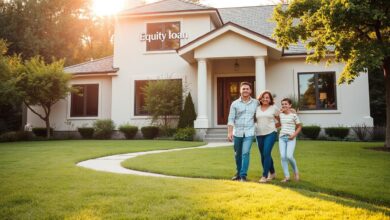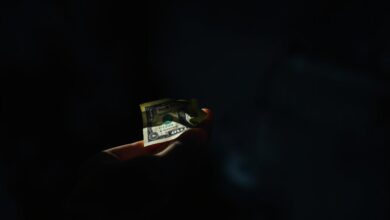How We Can Help You Get Online Loans for Bad Credit
Did you know millions of Americans face trouble getting loans because of bad credit? CreditNinja says bad credit loans are made for people with lower FICO scores. They offer financial help when regular loans aren’t an option.
Managing unexpected costs or paying off debt can be tough with bad credit. That’s where we step in. We help you find loans that fit your financial needs.
We’re here to support you in getting the financial aid you need, no matter your credit score. With our help, you can look into ways to handle your financial duties.
Key Takeaways
- Bad credit loans are designed for individuals with lower FICO scores.
- We assist in securing loans despite credit history.
- Our support helps manage unexpected expenses or debt consolidation.
- Tailored assistance for obtaining financial help.
- Guidance on exploring viable financial options.
Understanding Bad Credit and Its Impact
Bad credit can make it hard to get loans. But knowing what it means is the first step to fixing it. Bad credit scores show lenders you might be a higher risk.
What Constitutes Bad Credit?
Credit scores between 300 and 579 are seen as “poor” or bad credit. Scores from 580 to 669 are “fair” (CreditNinja). Bad credit can come from late payments, high credit use, or not paying back loans.
These signs tell lenders you might not pay back a loan. So, bad credit can block you from getting bad credit online loans and loans for poor credit online.
Why Bad Credit Affects Loan Approval
Lenders look at credit scores to guess if you’ll repay a loan. A low score means more risk, so they’re more careful with loans. It’s not impossible to get a loan with bad credit, but it’s harder.
For online loans for bad credit, lenders might ask for more, like higher interest rates or stricter payback plans. This is to lower their risk.
Common Misconceptions About Bad Credit
Many think bad credit means you’ll never get a loan. But that’s not true. Bad credit makes it tougher, but it’s not a total block.
There are lenders who offer loans for poor credit online. They help people who traditional lenders won’t. By understanding why you have bad credit and working to improve it, you can get a loan later.
The Benefits of Online Loans for Bad Credit
Online loans are a good option for those with bad credit. They offer many benefits that make borrowing easier and more manageable.
Convenience and Accessibility
Online loans are very convenient. You can apply from home, without having to go to a bank. This saves a lot of time and effort.
Streamlined Application Processes like CreditNinja’s make it even better. You can apply quickly and easily online. No need for long paperwork or waiting in lines.
Quick Approval Processes
Online lenders are fast when it comes to approving loans. They can make a decision in minutes or hours. This is great for people who need money quickly.
They use technology to check your credit fast. Online lenders look at more than just your credit score. This means people with bad credit can still get a loan.
Flexible Loan Terms
Online lenders offer flexible loan terms. This is good for people with bad credit because it lets them choose a repayment plan that works for them.
For example, CreditNinja offers flexible repayment terms. This lets borrowers pick a plan that fits their budget. It helps avoid financial stress and the risk of not paying back the loan.
In short, online loans for bad credit are a convenient, quick, and flexible option. They use technology and look at more than just credit scores. This makes them a valuable resource for those needing financial help.
Types of Online Loans Available for Bad Credit
Online loans for bad credit offer many options for financial help. People with credit issues can find loans that fit their needs.
Personal Loans
Personal loans are a common choice for those with bad credit. Online lenders often look at income and job history, not just credit scores. For example, Integra Credit offers loans up to $3,000, based on state laws.
This makes personal loans a good choice for unexpected bills or debt consolidation.
Secured vs. Unsecured Loans
Online loans for bad credit can be secured or unsecured. Secured loans need collateral, like a car or house, to get the loan. This lowers the lender’s risk and can offer better terms.
Unsecured loans don’t need collateral but have higher interest rates. This is because the lender takes on more risk.
Here’s a comparison of secured and unsecured loans:
| Loan Type | Collateral Required | Interest Rate | Risk Level |
|---|---|---|---|
| Secured Loan | Yes | Lower | Lower for lender, higher for borrower (risk of losing collateral) |
| Unsecured Loan | No | Higher | Higher for lender |
Cash Advances
Cash advances are a short-term loan option for bad credit. They provide quick cash, to be paid back when you get your next paycheck. But, they often have high fees and interest rates.
Knowing about the different online loans for bad credit helps make better choices. Look at loan terms, interest rates, and how you’ll pay it back. This way, you can pick the best loan for you.
How to Apply for Online Loans for Bad Credit
We make applying for online loans easy, even with bad credit. At CreditNinja, we’ve made our application simple. This is for those with lower credit scores.
Step-by-Step Application Process
Getting an online loan with bad credit is easy. Just follow these steps:
- Fill Out the Online Application Form: Share basic personal and financial details.
- Review Loan Terms: After applying, you’ll see loan offers with different terms.
- Accept the Loan Offer: Pick the loan that suits you best and agree to the terms.
Documentation Needed for Approval
To get approved, you’ll need to provide a few things:
- Identification: A valid ID from the government.
- Proof of Income: Recent pay stubs or bank statements.
- Bank Account Information: For the loan to be sent and paid back.
Tips for Completing Your Application
To boost your approval chances, keep these tips in mind:
- Be Accurate: Make sure all info is correct and current.
- Be Honest: Share true details about your finances.
- Check Your Credit Report: Knowing your score helps you understand your options.
By following these steps and tips, you can apply for an online loan with bad credit. Online bad credit loan providers like CreditNinja aim to make this process easy.
What Lenders Consider When Approving Loans
When approving online loans, lenders carefully check if you can pay back the money. They look at your credit history, which is important for them. This helps them decide if you’re a good risk for a loan.
Credit Scores and Reports
Lenders first look at your credit score and report. Credit scores show how well you handle money, from 300 to 850. A high score means you’re good with money. A score below 600 might show you have bad credit.
They also check your credit reports. This tells them about your past loans and how you paid them back. It helps them see if you might be a risk for them.
Income Verification
Lenders want to make sure you can pay back the loan. They check your income by looking at pay stubs and bank statements. Some, like CreditNinja, use Instant Bank Verification (IBV) to check your income fast and accurately.
Debt-to-Income Ratio
The debt-to-income (DTI) ratio is also important. It shows how much of your income goes to debt. A lower DTI means you can handle your debt better. Most lenders want a DTI of 36% or less.
Risks Involved with Online Loans for Bad Credit
Online loans for bad credit can be a lifeline, but they also have big risks. It’s key to know these risks to protect your finances.

High-Interest Rates
Online loans for bad credit often have high-interest rates. This is because lenders see borrowers with bad credit as riskier. CreditNinja says this makes the loan more costly over time.
It’s important to check the loan terms carefully before agreeing. Look at rates from different lenders to find the best deal. Knowing the total cost, including all fees and APR, is crucial.
Predatory Lending Practices
There’s also a risk of predatory lending practices. Some lenders might offer bad deals to desperate or uninformed borrowers. These can include hidden fees, high interest, and unfair repayment terms.
To avoid these lenders, do your homework. Look for reviews, ratings, and complaints. Make sure the lender is real by checking their address and contact info.
Falling Into Debt Cycles
Getting stuck in debt cycles is another risk with bad credit online loans. If you can’t pay on time, you’ll face more fees and interest. This can trap you in debt.
To avoid this, have a solid plan to pay back the loan. Make a budget, cut expenses, or find ways to earn more. Getting advice from financial advisors can also help manage debt.
In summary, online loans for bad credit can be helpful but come with risks. By understanding these risks and taking steps to manage them, you can make better financial choices.
Finding Reputable Lenders for Bad Credit Loans
Looking for online loans with bad credit? Finding a trustworthy lender is key. The online lending world is big, with many places offering loans to those with poor credit. But, not all lenders are the same, and some might make your financial situation worse.
Red Flags When Choosing a Lender
Stay away from predatory lenders by watching for red flags. Look out for lenders that promise approval without checking your credit, charge too much in interest, or have bad reviews. Be careful of lenders that ask for money upfront; real lenders take fees from the loan after approval.
- No clear contact information or physical address
- Aggressive marketing tactics
- Unusually high interest rates or fees
Online Reviews and Testimonials
Reading online reviews and testimonials is a great way to check a lender’s reputation. Sites like Trustpilot, Consumer Reports, and the Better Business Bureau offer insights from other customers. For example, LendingTree is known for connecting borrowers with many lenders, helping them compare rates.
CreditNinja is also praised for being transparent, quick, and customer-focused. Reading many reviews helps you understand what to expect from a lender.
Trusted Online Lending Platforms
Some online platforms specialize in bad credit loans. They often have easier eligibility and better rates than banks. Make sure you know the loan’s terms, like APR, repayment time, and any fees.
- Research the lender’s reputation thoroughly
- Understand the loan terms and conditions
- Compare offers from multiple lenders
By being careful and doing your homework, you can find a good lender for online bad credit loans. This can help you deal with your financial issues.
Improving Your Chances of Loan Approval
Getting a loan with bad credit can be tough, but there are ways to boost your chances. A bad credit score doesn’t mean you can’t repay a loan. By using smart financial strategies and knowing what lenders want, you can get get online loans with bad credit.
Strengthening Your Credit Score
Pay your loans on time, like those from CreditNinja, to improve your score. Always check your credit report for errors. Mistakes can hurt your score.
Timely payments show you’re responsible with money. This can lead to better loan terms later. Also, paying off debts lowers your debt-to-income ratio.

Co-Signers and Joint Applications
Think about getting a co-signer or applying with someone who has better credit. This can help you get approved because it lowers the lender’s risk. But, remember, co-signers or joint applicants must also repay the loan.
Alternative Records to Demonstrate Creditworthiness
If traditional credit scores don’t help, use other records to show you’re creditworthy. This includes rent payments, utility bills, and other regular payments. Some lenders might look at these when deciding on your loan.
By improving your finances and using other ways to show creditworthiness, you can get the loan you need.
Managing Your Loan Responsibly
Getting a loan from online bad credit loan providers is just the start. The real challenge is making your loan payments on time. This helps keep your finances in good shape.
Creating a Budget for Loan Repayment
First, you need to make a budget. This means looking at how much money you make and spend. CreditNinja advises making a budget that covers all your financial needs. This way, you can pay your loan without money troubles.
Setting Up Automatic Payments
Automatic payments are a smart move. CreditNinja says they help you avoid missing payments. This keeps your credit score healthy and saves you from extra fees.
Recognizing Warning Signs of Financial Trouble
Watch out for signs of money problems. These include trouble paying bills, growing debt, or getting collection calls. Spotting these signs early lets you fix issues before they get worse. You might need to adjust your budget or talk to your lender.
Managing your loan well is all about being proactive. With a budget, automatic payments, and watching for financial trouble, you can handle your loan. This leads to a better financial future with online bad credit loan providers.
Conclusion: Taking Control of Your Financial Future
Dealing with online loans for bad credit can be tough. But knowing your options is the first step. By applying for online bad credit loans, you can get the help you need to reach your goals.
We’re here to help you achieve your financial dreams. Lenders like CreditNinja and Integra Credit offer great resources. To get online loan approval for bad credit, look into your options and make smart choices.
Empowering Your Financial Decisions
It’s important to understand loan terms and conditions. This helps you use your loan wisely and avoid problems.
Resources for a Brighter Financial Future
We give you access to reliable online lending platforms. This lets you apply for online bad credit loans confidently. Take charge of your financial future today.









